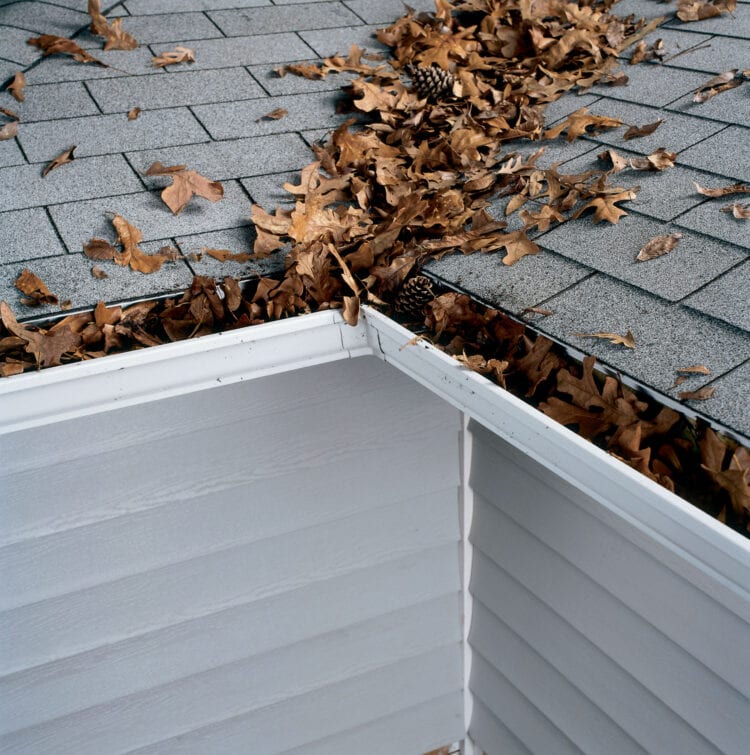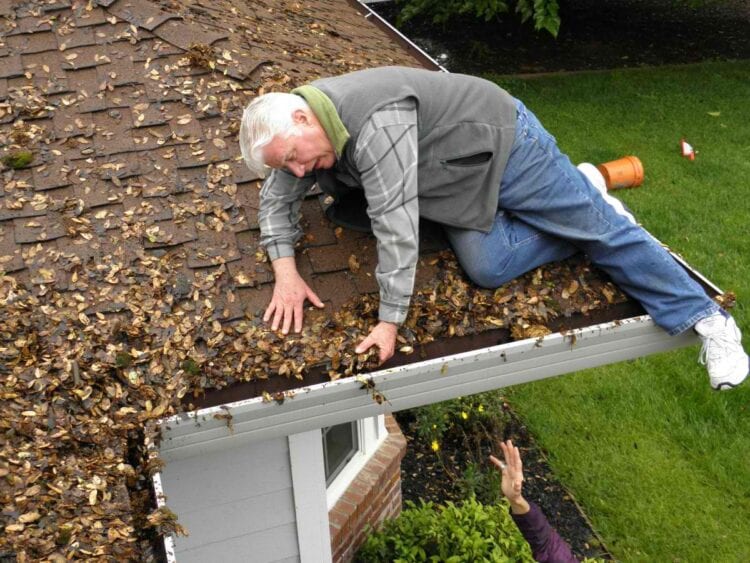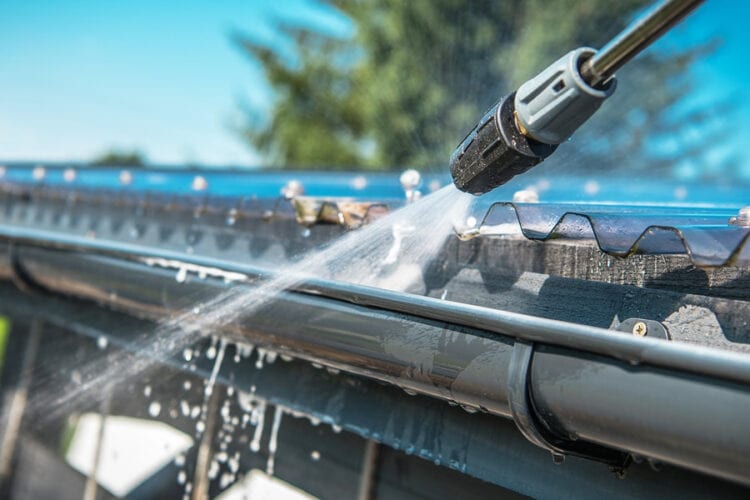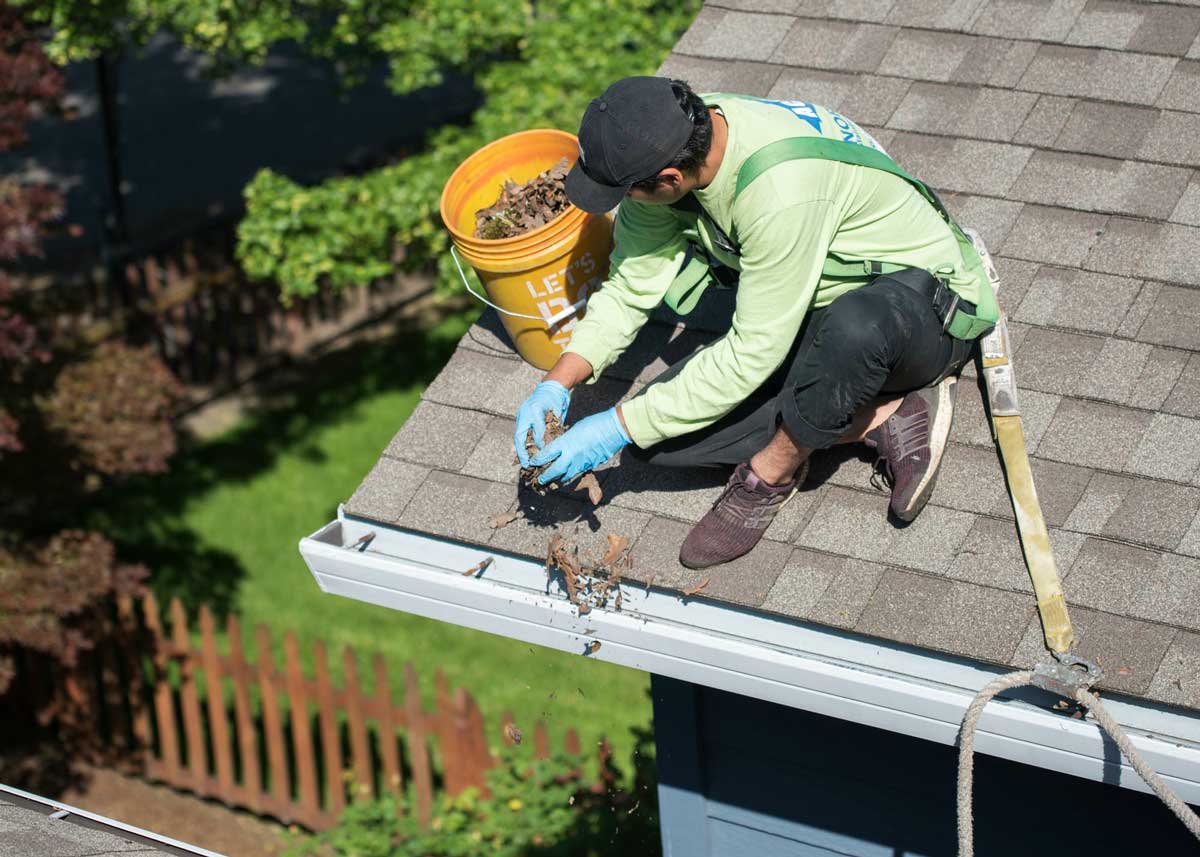Even though leaves, moss, and the rest of the nature-made debris can look beautiful, even artistic in some circumstances while packed with creative-mess-kind-of-atmosphere, having those in your roof gutters can cause difficulties in draining the rainwater from the roof.
If they’re empty and the water can flow without obstacles, your property will be safe from garbage and flooding. Like in any other part of household life, there are many ways to do something well, either by yourself or with the help of local professionals, as companies like gutterspecialists.co.uk always take care of performing their work in a safe and secure way. Regardless of it, it’s good to know your options and some important tips to make the most out of your cleaning. Sometimes it’s hard to be sure if it’s about time for removing the dirt or not yet. Depending on some significant technicalities we can conclude how troublesome this process might end up being and also – the best method to pick for it.

Spraying method
Attach the garden hose to the high-pressure sprinkler and place the hose in the downspout leveling it with the ground. The next step can be to twist the sprinkler to its highest force. By repeating this from the top of the downspout you’ll be able to fully wash it and make the rest fall from the top.
Hand removal

This is the so-called manual way, as, depending on the severity of the situation, there might be a time when using your hands or perhaps a shovel can be the best. With this, you need to use the ladder and climb up the house, take the debris from it, and throw it away. Don’t forget your gloves plus putting the bin nearby to dispose of the garbage from the top.
Method of a plumbing snake
A plumbing snake is a fantastic tool that professionals tend to use for plumbing jobs, and in this case, it can be more than handy for your gutters too. First, you can put the end of the snake into the downspout and spread it to the farthest end to feel where the clog is. When you do, rotate it, moving the obstacle and pushing it to the end, will bring out the junk. After this, you can flush the pipes again to make sure all leftovers are fully removed.
Disassembling method
Sometimes, removing the clog is harder than you might think in the beginning. Nothing turns out to be working – but there’s always that not-so-typical option that might help – using a screwdriver to disassemble the downspout into pieces and find out where the obstacles are. After you do, make sure to remove it manually and wash the pieces before putting them all back together. It might take a while, like assembling IKEA furniture, but it might be a worthwhile solution.
Leaf blower method
With this method, just like with many other ones, bringing the ladder with you is essential. The only option when it’s not necessary is when the leaf blower you own comes with the specialized extending attachments that can help it reach the roof. With this tool, not mainly aimed at unclogging the units, you might get the desired results as well. The thing is, leaf blowers have a sort of sprinkle attachment designed for a narrow stream of air, which is just fantastic for this goal. Go up the ladder with it and gradually blow out the clogs as you move. Finally, remove any remaining parts of leaves or twigs with a hose if needed.

Wet/Dry vacuum method
Sometimes there’s quite a lot of heavy junk in your gutters and using a wet or dry vacuum cleaner might be the best choice. You might be able to reach the clogged spots from the standing position without using the ladder, or maybe you’ll need to climb a bit up – it all depends on the ‘severity’ of the situation. Chances are that you can find additional equipment at a nearby store that can help you attach a hose or another type of tool to reach the heavy dirt stuck in it before you can smoothly vacuum it. Whatever you use, make sure to always rinse it all well after you finish removing the dirt.
Power washer method
Owning a power washer can be more than helpful in case you need to rinse your gutters. Like many other household tools, it comes with various attachments, most of which we even never use while their lifespans last. Remember those parts that come with a hairdryer that you never know what to do with? Well, something like that.
When you have a tool that can throw out the water with high pressure, just like a power washer is, you can use it to also wash the gutter and your downspouts. By putting it down the hole you want to clean and running the water through it until it becomes squeaky clean, you’ll resolve the problem. It might get a bit hard for the exterior walls and your roof, but those are washable, too.

Garden hose method
This simple tool is often used alongside other a bit more complex ones for the same purpose, yet sometimes it can be more than enough to simply use the hose itself, nothing else included. Some tubes can be used as small extensions to make it easier so you can remain on the ground while you do it. The best way is to start from the place the farthest from the downspout so that when you come to it everything is already rinsed. Simply move by following its natural way and remove the obstacles, with the help of your hands. Gloves are always welcome while performing such activities, though.
The additional tip here would be – start with the roof first. You know how sometimes you vacuum your floors and then you remember that you haven’t wiped the dust from your shelves beforehand. If you still decide to do it after vacuum cleaning, the chances are some dust and crumbs will end up on the floor, so it would make your efforts to use a vacuum cleaner almost worthless. The same goes for the gutters too – make sure to start from the top of the house and roof, and go step by step downward – it will save you nerves and time.

